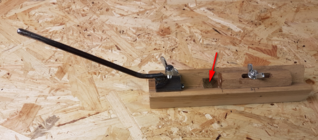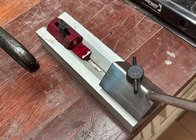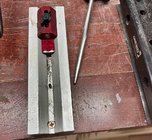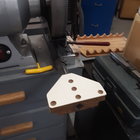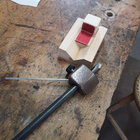john lucas
AAW Forum Expert
Actually my question is on the bowl gouge holder that looks like an Ellswirth jig. How is the flute oriented so the wings come out equal or is that even necessary. On my wolverine and Ellsworth jigs there is a flat area that pushes against the flute so that it is oriented to give you the same grind on both sides. Assuming of course that you remove equal amounts of steel. The vector grinding jig simply has a round hole bored through so it looks to me like you could mistakenly or on purpose orient the flute clockwise or couterclockwise rather than parallel to the bottom. That would obviously change the wing shape each time you sharpen if you dont do it exactly the same way each time.

